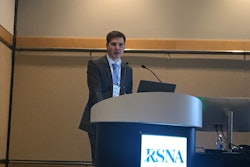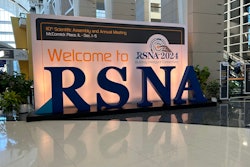CHICAGO – A commercially available AI fracture detection model significantly improved clinical workflow when deployed in a four-hospital group in Norway, according to a presentation on 2 December at RSNA 2024.
Yet contrary to what researchers expected, the model did not save radiologists a great deal of time, noted Line Tveiten, a clinical radiographer at Vestre Viken Hospital Trust, which covers an area with 470,000 residents in 26 municipalities.
“We anticipated a reduction of the reading time for the radiologist, but that actually didn't happen. However, we experienced a significant unforeseen benefit for the patient and other healthcare workers in the hospital,” she said.
The CE-cleared AI model (BoneView, Gleamer) detects fractures in x-rays. The software highlights regions of interest with bounding boxes around areas where fractures are suspected so that those x-rays can be prioritized in workflows.
Prior to deploying the model, the group first performed a retrospective study involving several phases over the course of about a year to validate the model in a Norwegian population. The model’s detection accuracy was 91.3% compared to 95.2% for radiologists, with radiologists showing an increase in sensitivity from 93% to 98% with AI assistance, according to the findings.
Next, the group standardized workflows at the four hospitals where the AI was to be deployed. This was a complex process involving multiple steps to ensure that all stakeholders knew “what's in it for them,” Tveiten noted, as well as the potential benefits to patients and clinicians.
“One of the most crucial activities was to conduct a workshop with all the stakeholders,” she said.
Deploying the algorithm involved integrating the model in the group’s RIS as a triaging tool. When patients arrive with a suspect fracture, radiographers perform the x-ray and then send it to the model, with the AI’s results returned in about a minute.
If the results are negative, the patient is sent home, unless the emergency department physician requests an extra consultation. If the report from the AI model is positive, the patient remains in the emergency department to await a consultation and the image is then worked into the standard workflow of radiologists, Tveiten said.
Ultimately, out of 35,000 patients, the AI model enabled radiographers to directly discharge 8,500 patients with negative findings, thereby reducing total patient waiting time by 250 days in total. There was also a decrease in the need for 6,000 doctor consultations at emergency departments, which allowed doctors to allot more time for sick patients, Tveiten said.
In addition, the AI-enhanced triaging capability in the RIS allowed radiologists to prioritize the reporting of urgent cases and facilitated the workflow, she noted.
Ultimately, this is the first initiative to implement a commercially CE-approved AI model in a clinical workflow setting in Norway, Tveiten noted.
“This implementation optimized and significantly improved clinical workflow in all our hospitals,” she concluded.
For our full coverage of this year’s meeting, visit our RADCast.


















